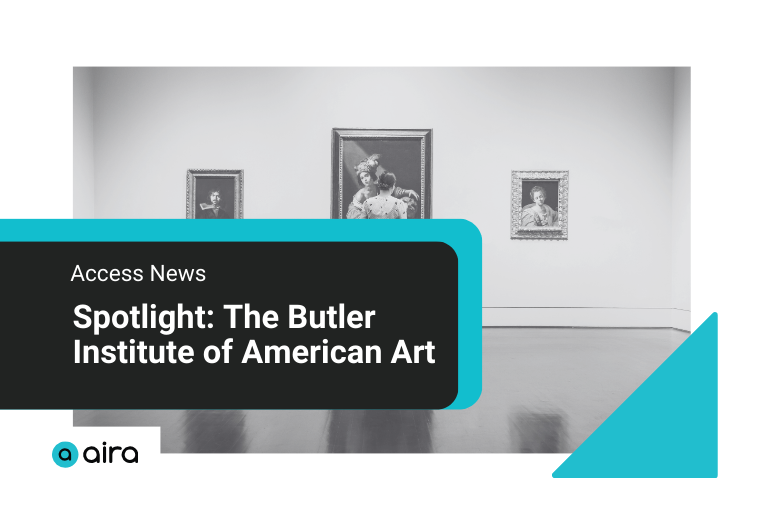The Butler Institute of American Art, located in Youngstown, Ohio, was the first museum dedicated exclusively to American art. Established by local industrialist and philanthropist Joseph G. Butler Jr, the museum has been operating since 1919.
Accessibility is a priority for The Butler, and as part of their efforts they have offered Aira for free since December, 2021. This means any museum visitor can open the Aira app and instantly connect to a professional visual interpreter. We spoke to Joy Mistovich, the Digital UX Accessibility Specialist at The Butler Institute, to hear about how Aira has supported her connection to art, as well as enhanced the experience for visitors.
A personal connection
In 2017, Joy began using the Aira app as an Explorer. The daughter of artists, Joy grew up around art. She has some usable vision and was able to see the larger details in pieces. When she used Aira for the first time to go through The Butler Institute, it was a revelation: Joy could decipher the smaller, more intricate details of artwork. The visual interpreter she connected with was an artist herself and described the art pieces in vibrant and vivid detail. That Aira experience was a momentous one. “It really changed my life as far as the visual arts and cultural institutions are concerned because that’s where I really found I belonged.”
Joy then went on to create her own job proposal at The Butler Institute and used Aira as a valuable tool in formulating and obtaining her dream job. She has been working on accessibility initiatives at the museum since 2021, as well as championing Aira to visitors. Joy also uses it in a myriad of ways over the course of her workday.
When I became an Aira Explorer, I received my second set of wings to fly higher than ever before, both literally and metaphorically. As an Explorer, if I encounter a new barrier, I can shatter the specific misconception or stereotype, and through my actions, words, and aspirations, I continue to demonstrate that as a blind museum educator, writer, researcher, visual artist, technologist, and accessibility pioneer, anything is possible. My life journey isn’t solely for myself, but giving the courage, tenacity, confidence, independence, and an understanding of the visual arts to all. —Joy Mistovich
Five ways Aira is used at The Butler Institute
1. During classes & workshops
The museum offers a range of classes, from portrait painting to ceramics to photography. Students can use Aira to locate the room the class is being held in, receive descriptions of materials, and obtain additional information about demonstrations and creating art pieces.
2. To get the most out of lectures
Many lectures or presentations will be accompanied by visual mediums, such as Powerpoint presentations. An Aira visual interpreter can read aloud the text and describe images of artists, their work, and other pertinent details concerning elements and principles of design.
3. To explore independently
The Butler Institute is an expansive space, and Aira assists visitors with moving from gallery to gallery, finding exhibits they’re most interested in, as well as visiting the cafe and museum store. It gives Explorers more independence to move through the museum at their own pace and focus on what exhibits interest them.
4. For exploring the museum store
Explorers use Aira to learn about the specifics of the items in the retail store, and to fully explore the books, gift items, and art-inspired toys available.
5. In learning more about artwork
Aira’s visual interpreters can read aloud exhibit text and descriptions to provide more information about a piece of art. For visitors who want to dive deeper, they can also assist with research.
A memorable Aira moment
A fourth grade class was recently visiting The Butler Institute as part of a field trip. The school group’s tour included checking out a George Washington tactile exhibit from 3DPhotoWorks, a company that provides Braille, large print, audio, and tactile experiences. When she encountered the group of students in the gallery, Joy was on a video call with an Aira interpreter. She took out her headphones and shared the call with a blind student in the group. He was blown away by the live descriptions and the different way of taking in art. “At the conclusion of the tour he felt like he belonged in the museum space,” explains Joy.
Interested in offering Aira in your museum? Get in touch.
